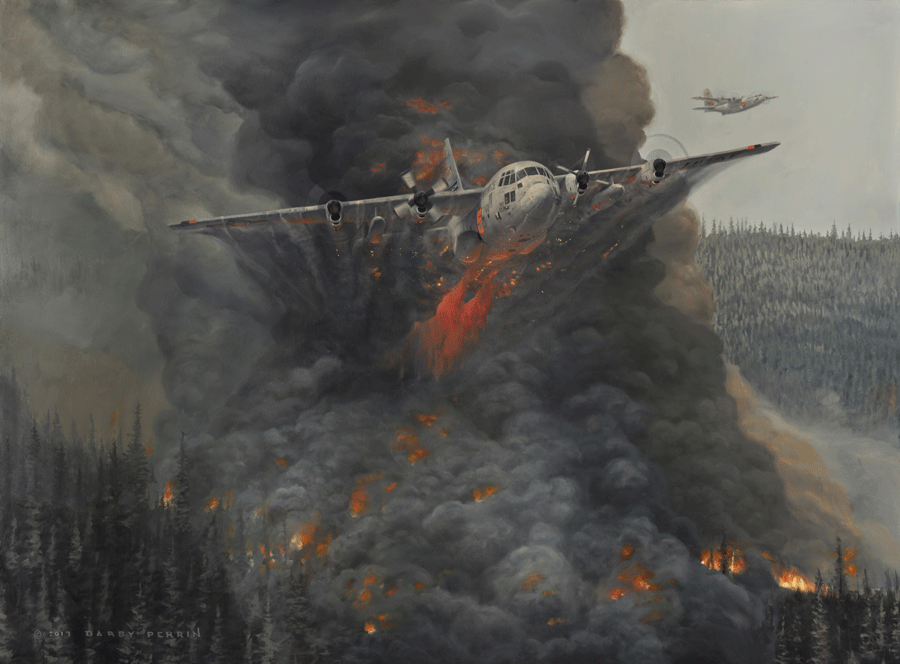
CLICK IMAGE FOR HIGH RESOLUTION


Artist: Senior Master Sgt. (ret.) Darby Perrin
Medium: Oil on masonite
Date: 2017
A wildland fire racing down a forested ridgeline towards a small town is a terrifying force of nature. The United States averages more than 73, 000 fires each year that burn 7 million acres. Fire seasons are growing longer and more destructive. Fires are both bigger and demonstrate more extreme fire behavior as they burn more acreage each year. Each fire season, the US For-est Service sends ground and aerial firefighters to protect lives and property. When civilian capability to fight the fires is exhausted, the National Inter-agency Fire Center in Boise, Idaho calls the US Air Force for help. That help arrives in the form of large, noisy, four-engine Air Force C-130 “Hercules” aircraft with big florescent orange numbers on them. Each of the aircraft are equipped with second generation Modular Airborne Fire Fighting Systems (MAFFS) capable of dropping nearly 30,000 pounds of water or bright red fire retardant in about five seconds to cover an area a quarter-mile long and 60 feet wide. Each drop reduces the fire’s intensity and slows the growth of wildfires so that firefighters on the ground can build containment lines.
The aerial firefighting mission is dangerous and the fires are unpredictable. It is often described as the most challenging flying done in the C-130 with low altitudes, low speeds, high-density altitude, and high temperatures. The aircraft drops fire retardant from 150-200 feet above ground level, at 120 knots--just slightly above stall speed, and often through smoke in moun-tainous terrain. Pilots are max performing the aircraft every time and there is very little room for error. Only the most experienced aircrews are selected for the firefighting mission and they train with the US Forestry Service and are recertified before each year’s fire season.
In the summer of 2000, MAFFS-5, flown by Reserve Citizen Airmen from the 731st Airlift Squadron, 302d Airlift Wing, based at Peterson Air Force Base, Colorado, faced challenging conditions as they followed a Forest Ser-vice lead plane to its drop on an area where fire and smoke were blowing up in a valley. As they entered the final turn for their run-in to the drop at 120 knots a mere 150 feet above the valley floor, the wind shifted. Large trees erupted into flaming torches shooting fire and thick black smoke into the sky. Unable to maneuver in the valley, the aircraft plunged into a furnace of black smoke. Two engines quit. The crew immediately dumped their fire retardant load and, struggling to keep the aircraft stable, successfully re-started one of the two engines. The added power enabled the aircraft to clear the ridgeline before safely returning to the Channel Islands Air National Guard Base, California.